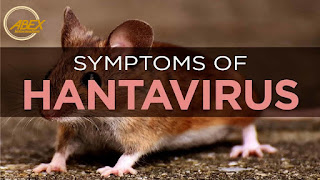 |
| Hanta Virus! How much should you fear about the newly viral virus |
Hanta Virus! How much do you have to worry about the newly viral virus?
The world has been hurt by the Coronavirus pandemic. People are in self-isolation trying everything possible to not get suffering from this virus because scientists are still unable to seek out a vaccine for the virus and therefore the virus is spreading rapidly day by day. During this tough time where people are already frightened of the coronavirus, a person in china dies from an epidemic called hantavirus which is making people more worried.
From Where Did It Originate?
In November 1933, Its All Started when Hanlavirus cause the four corners outbreak was isolated. The special Pathogen Branch At CDC Used tissue from a Peromyscus maniculatus that had been trapped near the New Mexico home, an individual who was affected by this disease, at the laboratory this virus was discovered and confirmed.
So In the 1950s, a cluster of three, 000 United Nations troops stationed in Korea was Struck By This Mysterious disease. The Hantavirus For They Very First Time Revealed therein Time. After This Virus People start Panic from rats.
Do all mice carry Hantavirus?
No not mice carry this virus-like house mouse, roof rats and Norway rats haven't been known to offer HPS. This bit easy to mention this that each one mice it eats carry Hantavirus but avoid all wild rats and punctiliously pack up all the rodent urine dropping and nests almost you're home.
In which animal this virus is found?
This Virus found within the Urine, saliva, and dropping of Infected Peromyscus maniculatus and Other wild Rodent cotton rats/ice rats within the Southern Unites States and therefore therefore the White-footed mouse and the redback vole ), It Causes Rare but lung Disease Hantavirus pulmonary syndrome ( HPS).
How Many Cases of this virus?
In January 2017, 728 cases of hantavirus disease are reported since surveillance within the us began in 1993.
Hantavirus Disease Characteristics within us
Characteristic Number
Cases of hantavirus infection (HPS and non-pulmonary hantavirus infection), as of January 2017 728 cases
Patients ill with HPS (Sex) 63% Male
37% Female
Patients ill with HPS (Race) 78% White
18% American Indian
1% African American
1% Asian
Mean age of confirmed case-patients 38 years (range 5 to 84 years)
Reported HPS cases leading to death. 36%
Cases occurring in states west of the Mississippi River 96%
What Are The Symptoms Of This Virus?
The symptoms of this virus Appear in1 to five weeks. This Disease is extremely scary and very serious almost 40 Percent of people that get this Disease, die.
This Disease starts during a body by flu illness within the very early stage and more by fever, chills, muscle aches, headache, nausea, vomiting and shortest of breath, rapid heartbeat and gastrointestinal problems, This Disease spread rapidly within the body to the extent of abnormal fall in vital sign and in lungs.
What Are The Precautions?
Seal the opening Of Your House ( where the rat can enter )
Seal your food Dishes.
Cover The ashcan rodent-proof lids
Clean wisely the world where you see mouse dropping
Avoid vacuuming and sweeping.
What you'll Do Inside Your Home:
Keep food in thick plastic or metal containers with tight lids.
Clean up spilled food directly.
Wash dishes and cooking utensils soon after use.
Put pet food away after use. don't leave pet-food or water bowls out overnight.
Keep garbage in thick plastic or metal containers with tight lids.
How to Keep Mice And Rats Out Of Homes:
Some mice and rats can carry harmful diseases, like HPS, Leptospirosis, lymphocytic choriomeningitis, plague, and typhus. The best thanks to protecting you and your family from these diseases are to stay mice and rats out os your homes.Hantavirus Life Cycle:
The genus Hantavirus resides within the family Bunyaviridae, an outsized family of over 300 viruses that infect animals, plants, humans, and arthropods (36, 100, 388).generally, hantaviruses are commonly mentioned as Old World and New World hantaviruses thanks to the geographic distribution of their rodent reservoirs and therefore the sort of illness (HFRS or HPS) that manifests upon transmission to humans (382).
Despite the differences in geographic locations and illnesses, the Old World and New World hantaviruses share high homology within the organizations of their nucleic sequences and exhibit similar aspects of their life cycles.
How Can HPS Prevent?
Keep mice and rats out of your home.
Clean up mouse and rats urine, droppings, and nesting materials with a disinfectant or a mix of bleach and water.
Abstract:
Hantaviruses are enzootic viruses that maintain persistent infections in their rodent hosts without apparent disease symptoms.
The spillover of those viruses to humans can cause one among two serious illnesses, hantavirus pulmonary syndrome and hemorrhagic fever with renal syndrome. In recent years, there has been an improved understanding of the epidemiology, pathogenesis, and explanation of those viruses following a rise within the number of outbreaks within the Americas.
during this review, current concepts regarding the ecology of and disease related to these serious human pathogens are presented. Priorities for future research suggest an integration of the ecology and evolution of those and other host-virus ecosystems through modeling and hypothesis-driven research with the danger of emergence, host switching/spillover, and disease transmission to humans.












0 Comments